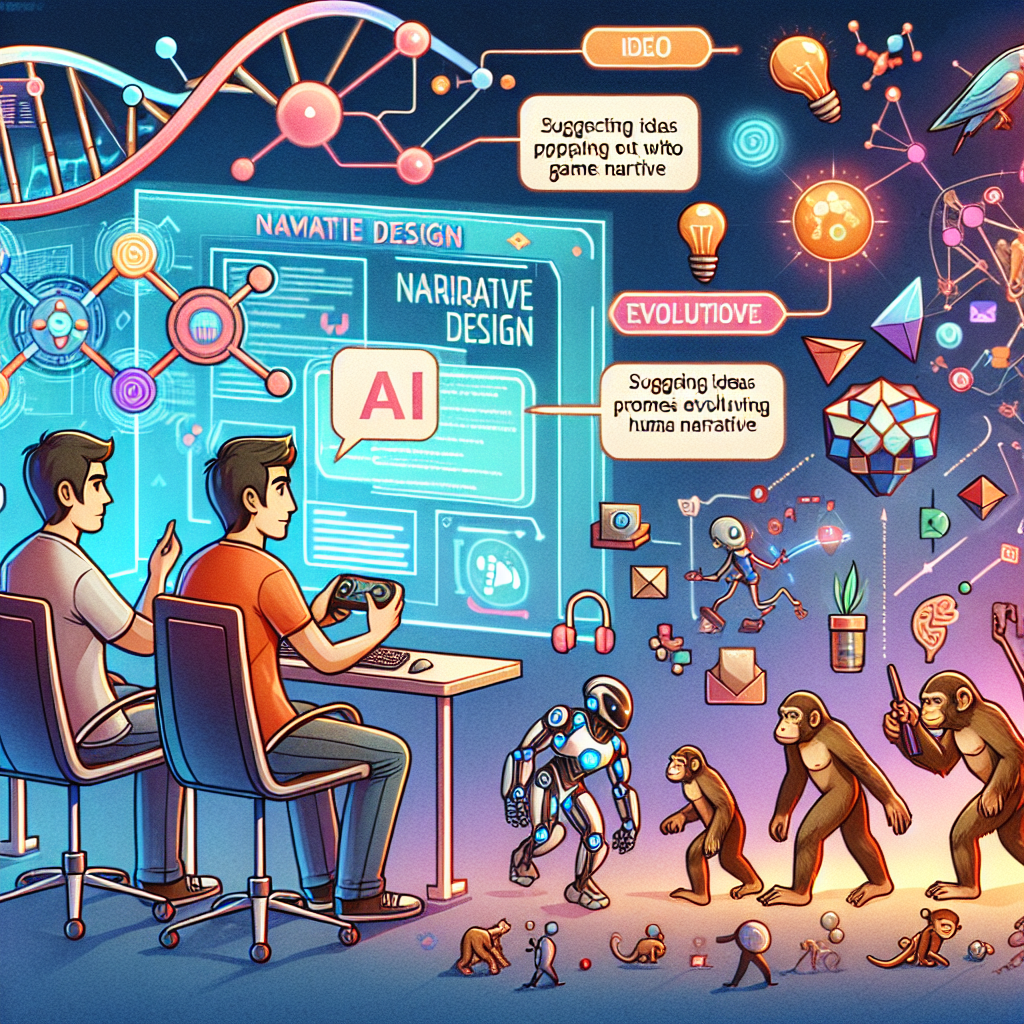Artificial intelligence (AI) has been rapidly evolving and transforming various industries, and the gaming industry is no exception. One of the most intriguing applications of AI in gaming is its impact on game narrative design. Game narrative design refers to the storytelling aspects of a game, including the plot, characters, dialogue, and overall narrative structure. AI technologies have the potential to revolutionize how game narratives are created, delivered, and experienced by players.
AI-powered game narrative design can enhance player immersion, personalization, and engagement in ways that were previously unimaginable. By analyzing player behavior, preferences, and interactions in real-time, AI can dynamically adjust the narrative elements of a game to create a more personalized and compelling experience for each player. This level of personalization can significantly enhance player engagement and retention, as players feel more connected to the game world and its characters.
Furthermore, AI can also help game developers create more complex and branching narratives that adapt to player choices and actions. Traditionally, game narratives were linear and predetermined, with limited player agency and impact on the story. However, AI technologies can now enable games to dynamically generate storylines, dialogue options, and character interactions based on player decisions, creating a more immersive and interactive experience. This level of dynamic storytelling can lead to endless possibilities and outcomes, making each playthrough unique and unpredictable.
Another key benefit of AI-powered game narrative design is its ability to generate content at scale. Game development is a time-consuming and labor-intensive process, especially when it comes to creating narrative content such as dialogue, quests, and cutscenes. AI technologies can automate the generation of narrative content, reducing the workload on developers and enabling them to focus on other aspects of game development. This can also lead to more diverse and rich game worlds, as AI can generate a wide range of content based on predefined parameters and player interactions.
Moreover, AI can also help improve the overall quality of game narratives by providing insights and recommendations to developers. By analyzing player feedback, reviews, and gameplay data, AI can identify patterns, trends, and areas for improvement in the narrative design of a game. This feedback can help developers refine and optimize their storytelling techniques, leading to more engaging and impactful narratives that resonate with players.
Despite the numerous benefits of AI-powered game narrative design, there are also challenges and limitations that developers need to consider. One of the main challenges is the ethical implications of using AI to create narrative content. AI algorithms are trained on large datasets of existing content, which may contain biased or inappropriate material. Developers need to ensure that AI-generated narratives are diverse, inclusive, and culturally appropriate to avoid perpetuating harmful stereotypes or messages.
Another challenge is the potential for AI to replace human creativity and intuition in game narrative design. While AI can automate certain aspects of narrative creation, such as generating dialogue or quest objectives, it is essential for developers to maintain creative control and oversight over the storytelling process. AI should be seen as a tool to augment and enhance human creativity, rather than replace it entirely.
Furthermore, AI technologies are still evolving and may not always produce the desired results in game narrative design. Developers need to carefully test and validate AI-generated content to ensure its quality, coherence, and relevance to the overall game experience. Balancing the use of AI with human oversight and intervention is crucial to achieving the desired outcome in game narrative design.
In conclusion, AI has the potential to revolutionize game narrative design by enhancing player immersion, personalization, and engagement. By analyzing player behavior, preferences, and interactions, AI can dynamically adjust narrative elements to create a more personalized and compelling experience for each player. AI can also help developers create more complex and branching narratives that adapt to player choices and actions, leading to endless possibilities and outcomes. However, developers need to be mindful of the ethical implications, creative limitations, and technical challenges associated with AI-powered game narrative design. By harnessing the power of AI responsibly and creatively, game developers can create innovative and immersive storytelling experiences that captivate players and push the boundaries of game narrative design.
FAQs:
1. How does AI impact player immersion in game narratives?
AI can enhance player immersion by analyzing player behavior, preferences, and interactions in real-time to dynamically adjust narrative elements and create a more personalized and engaging experience for each player.
2. How can AI help create more complex and branching narratives in games?
AI technologies can enable games to dynamically generate storylines, dialogue options, and character interactions based on player decisions, creating a more interactive and immersive experience with endless possibilities and outcomes.
3. What are the ethical implications of using AI in game narrative design?
Developers need to ensure that AI-generated narratives are diverse, inclusive, and culturally appropriate to avoid perpetuating harmful stereotypes or messages. It is essential to balance the use of AI with human oversight and intervention to maintain creative control and integrity in storytelling.
4. How can developers validate the quality of AI-generated narrative content?
Developers need to carefully test and validate AI-generated content to ensure its quality, coherence, and relevance to the overall game experience. Balancing the use of AI with human oversight and intervention is crucial to achieving the desired outcome in game narrative design.

